The magic of snorkeling lies in its simplicity—with just a mask, snorkel, and fins, anyone can transform into an underwater explorer. Unlike scuba diving, snorkeling requires minimal equipment and training, making it accessible to nearly everyone, from young children to seniors.
This low-barrier entry to the underwater world allows millions of visitors each year to witness marine ecosystems in their natural state while barely causing a ripple on the surface above. The world’s premier snorkeling destinations offer something truly special beneath the surface—whether it’s vibrant coral gardens, curious marine creatures, or underwater landscapes that seem pulled from another planet.
Here is a list of 14 beaches where the snorkeling experience rivals any aquarium visit.
Hanauma Bay, Hawaii
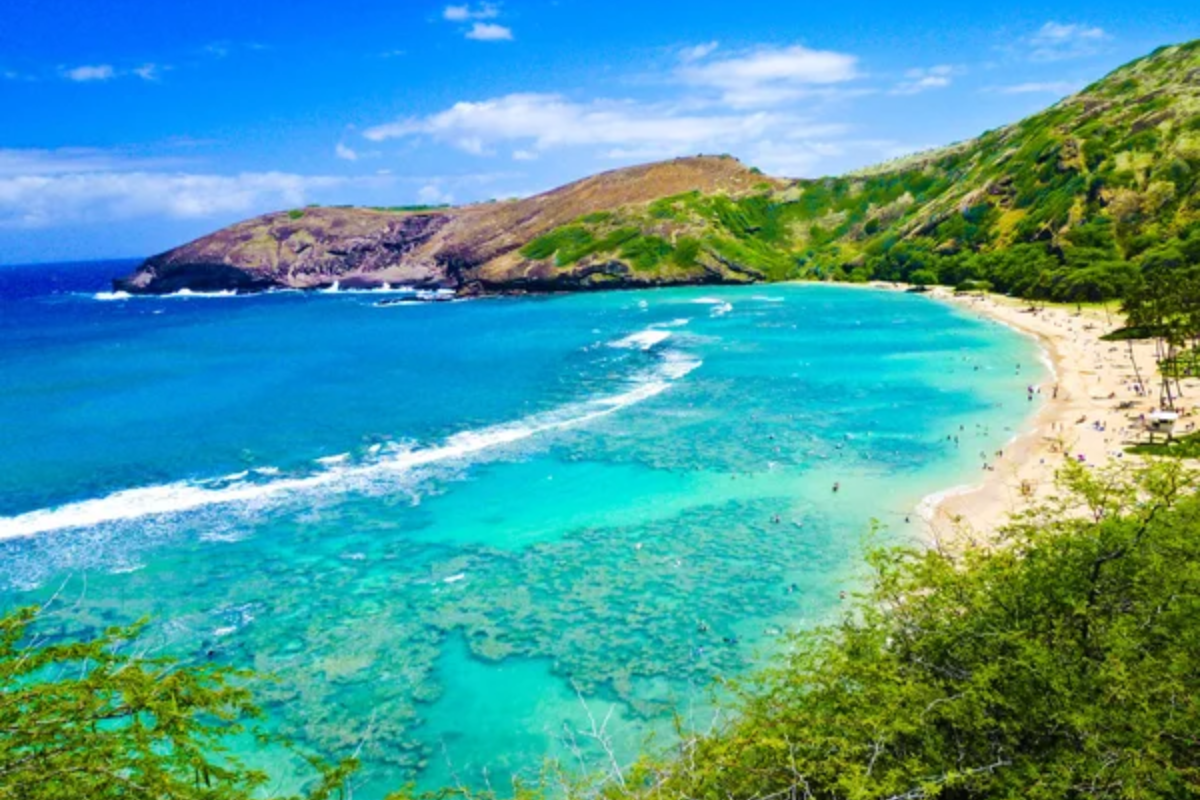
This crescent-shaped beach on Oahu sits within an ancient volcanic crater that now serves as a natural aquarium. The protective reef creates calm, clear waters ideal for beginner snorkelers while providing habitat for over 400 species of colorful Hawaiian fish—including the humuhumunukunukuapua’a, Hawaii’s state fish with its distinctive triggerfish shape.
The conservation area limits daily visitors to protect the fragile ecosystem, ensuring those who do enter find healthy coral and abundant marine life just a few kicks from shore. Nearly every visitor spots green sea turtles gliding peacefully through the shallow waters, often accompanied by parrotfish using their beak-like mouths to scrape algae from coral heads.
Bora Bora Lagoon, French Polynesia

The electric blue lagoon surrounding this South Pacific island offers some of the clearest water on Earth, with visibility often exceeding 100 feet. Snorkelers here float above massive manta rays with wingspans reaching 15 feet as they gracefully feed on plankton in the calm waters.
The protected lagoon features coral gardens teeming with butterfly fish, angelfish, and blue-green parrotfish that add flashes of color against the white sand bottom. Local guides know exactly where to find blacktip reef sharks—completely harmless to humans—that cruise the shallow channels between coral formations, providing an adrenaline rush even for experienced underwater explorers.
Like Travel Pug’s content? Follow us on MSN.
Molokini Crater, Hawaii
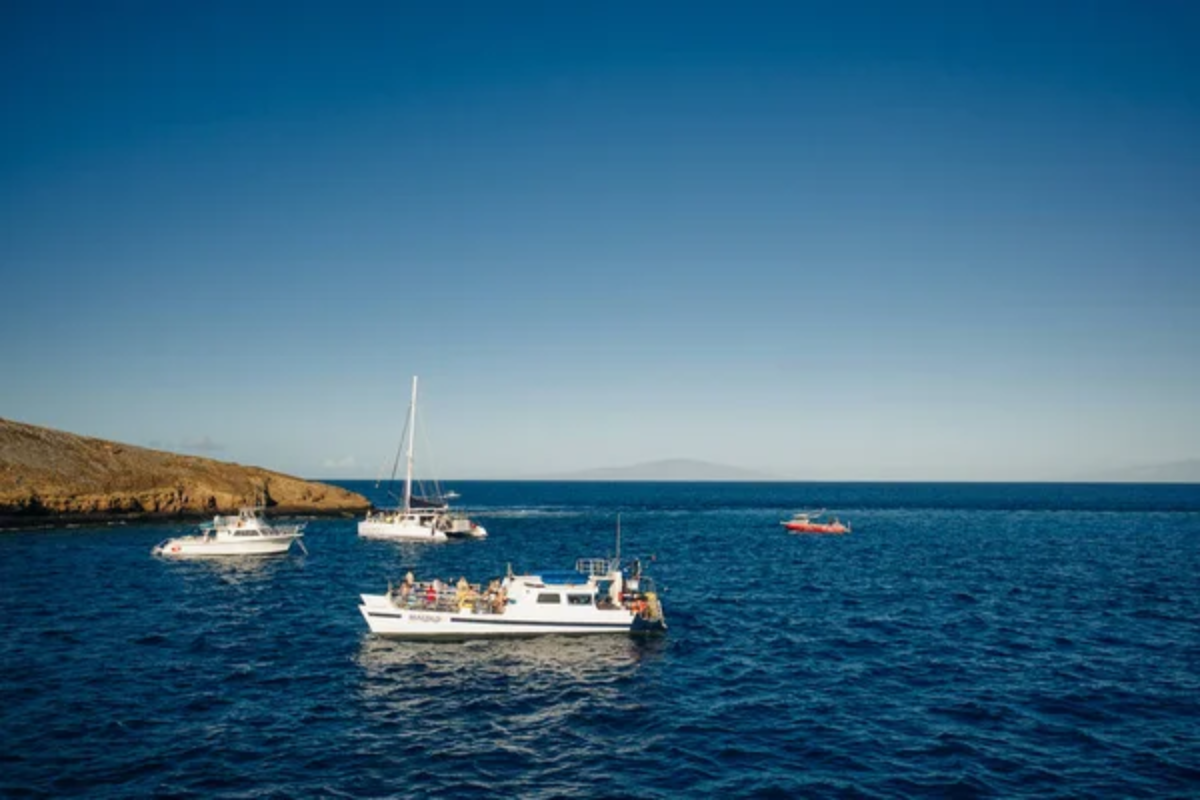
This partially submerged volcanic caldera between Maui and Kahoolawe creates a protected cove with water visibility frequently exceeding 150 feet. The crescent-shaped islet blocks ocean swells, creating ideal conditions for observing over 250 species of fish found nowhere else on Earth.
Schools of yellow butterflyfish and blue-striped snappers move in synchronized clouds among the coral, occasionally parting to reveal green sea turtles resting on the reef below. The unique acoustics within the crater amplify the otherworldly sounds of parrotfish crunching coral and the high-pitched dolphin-like calls of reef triggerfish, creating an immersive auditory experience to accompany the visual spectacle.
Los Tuneles, Galápagos Islands
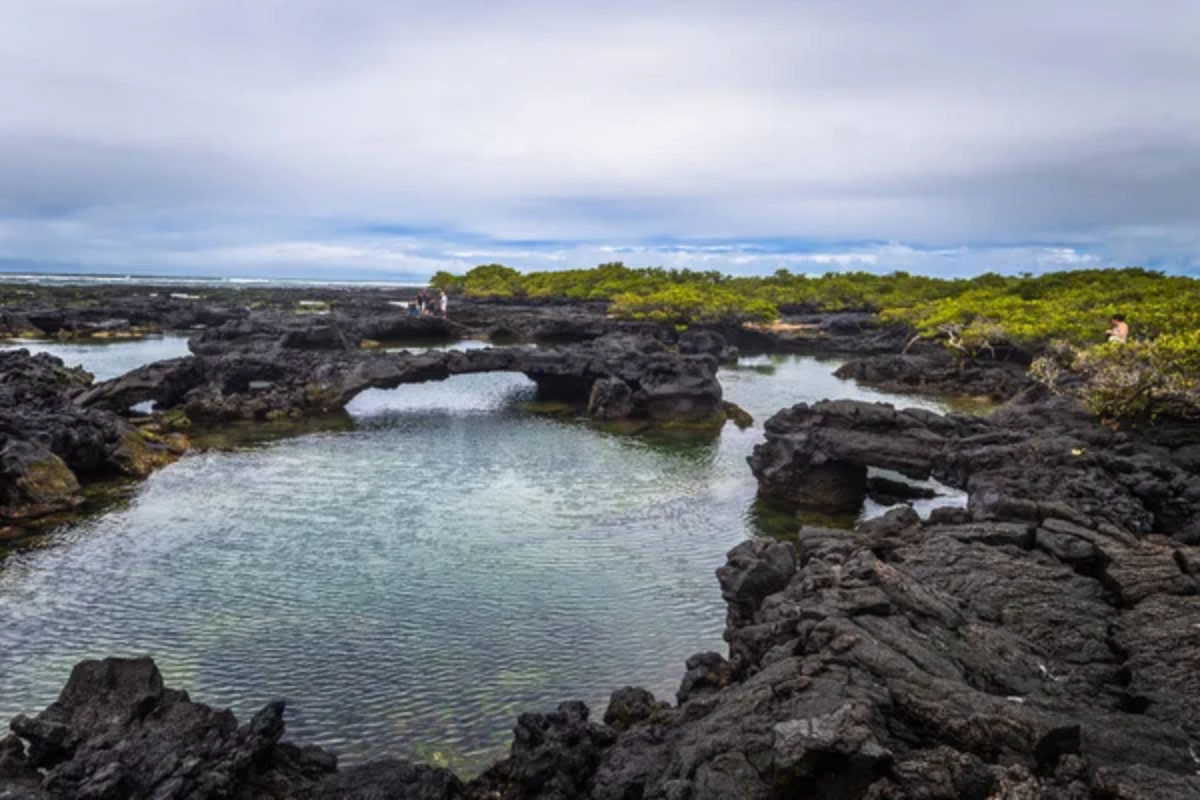
Located off Isabela Island, this series of lava tunnels and arches created by ancient volcanic eruptions provides a truly unique snorkeling landscape. Crystal-clear channels weave between rock formations where blue-footed boobies nest above while white-tipped reef sharks rest below in underwater caves.
Curious sea lions often approach snorkelers, twirling and somersaulting around visitors with playful abandon that transforms an ordinary swim into an interactive marine mammal encounter. The combination of volcanic geography and equatorial marine biodiversity creates an environment where tropical fish dart among lava formations while marine iguanas—the world’s only ocean-going lizards—cling to rocks before diving for their algae meals.
Raja Ampat, Indonesia
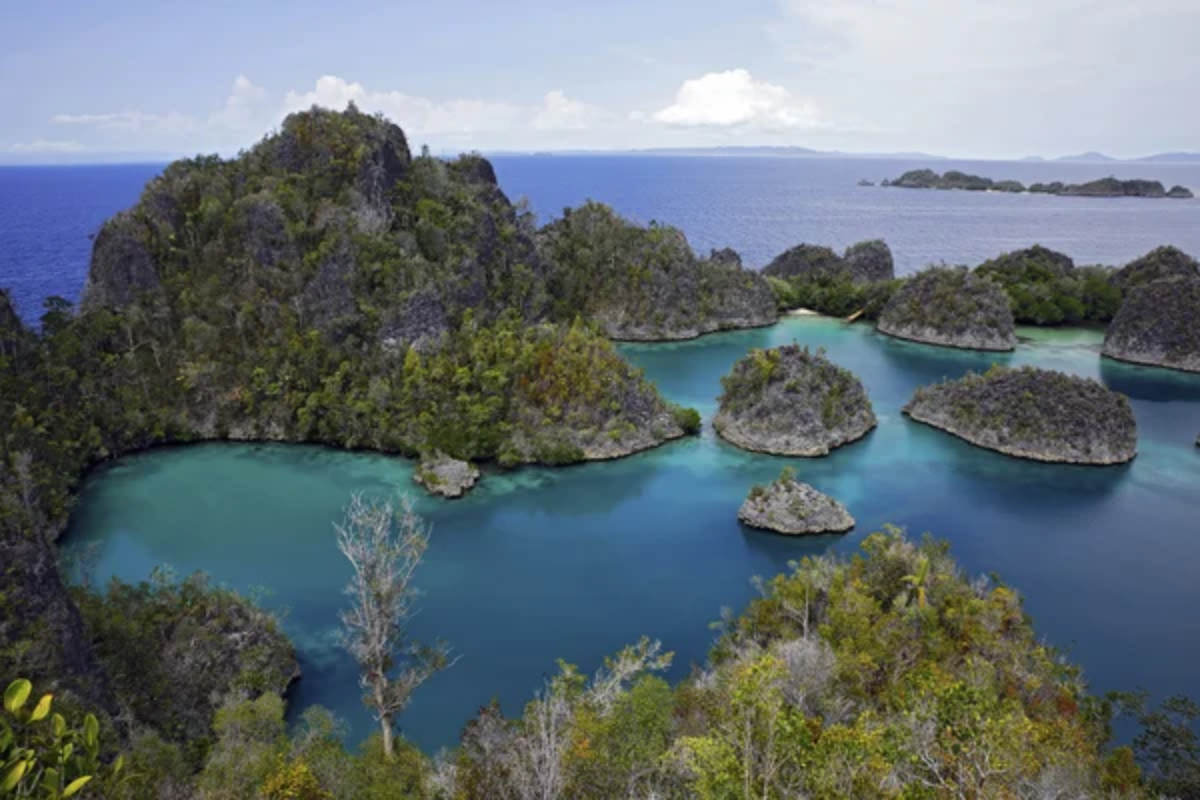
This remote archipelago in West Papua sits at the heart of the Coral Triangle—the most biodiverse marine environment on Earth, with over 1,500 fish species and 600 coral types. Snorkelers exploring the shallow reef flats drift above coral gardens so densely packed with life that hardly any substrate remains visible beneath the living carpet of soft corals, sea fans, and hard coral formations.
Schools of fusiliers create shimmering blue and yellow rivers that flow around the reef while tiny pygmy seahorses, no larger than a grain of rice, hide in plain sight on specific sea fan species. The nutrient-rich waters attract larger visitors as well, with reef manta rays often feeding near the surface where snorkelers can observe their cavernous mouths filtering plankton from the current.
Like Travel Pug’s content? Follow us on MSN.
Champagne Reef, Dominica
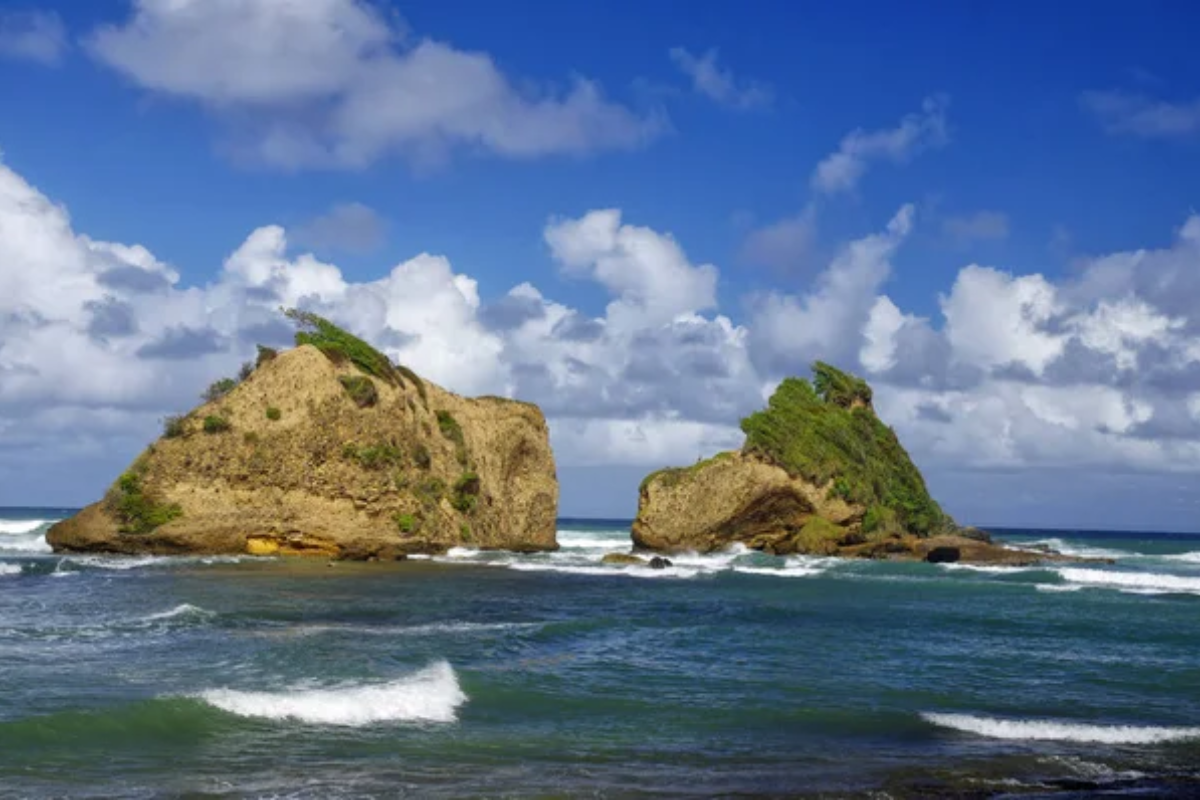
Located just south of Roseau, this unique snorkeling site offers an experience as effervescent as its name suggests. Champagne Reef sits above a volcanic vent system, where warm bubbles of gas rise continuously from the seabed—giving snorkelers the sensation of swimming through a giant glass of sparkling water.
The warm geothermal waters attract colorful reef life, including trumpetfish, sergeant majors, and seahorses clinging to swaying sea grass. The reef’s combination of volcanic geology and marine biodiversity creates surreal underwater visuals, with streams of shimmering bubbles dancing around coral-covered rocks.
Despite its unusual geology, the reef lies just a few fin kicks from shore, making it easily accessible to snorkelers of all experience levels.
Silfra Fissure, Iceland
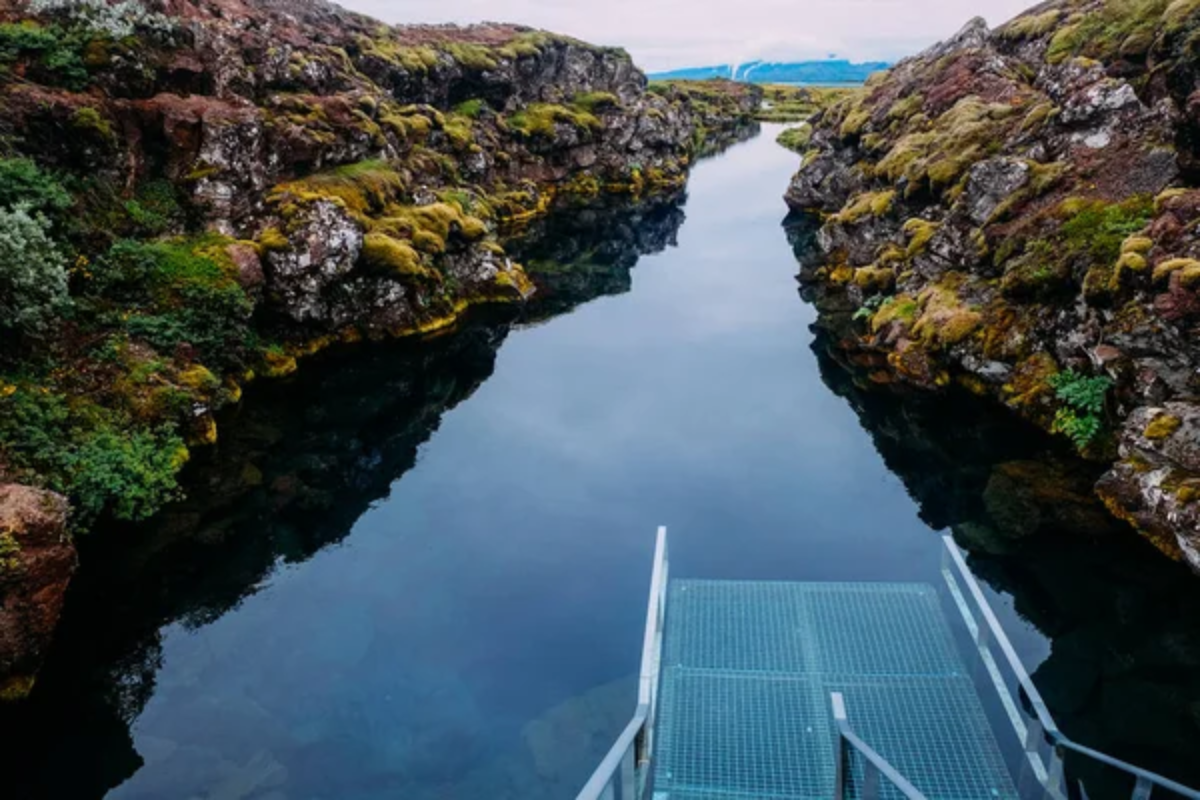
Unlike most snorkeling destinations featuring tropical waters and colorful fish, this crack between the North American and Eurasian tectonic plates offers a completely different underwater experience. Snorkelers float in glacial meltwater filtered through porous lava rock for decades, resulting in visibility exceeding 300 feet—so clear it creates the sensation of flying rather than swimming.
The water hovers just above freezing year-round, requiring dry suits, but rewarding brave snorkelers with the unique experience of touching two continents simultaneously while drifting through the fissure. The otherworldly blue water glows with an almost neon intensity when sunlight penetrates the surface, illuminating algae-covered lava rocks in shades of electric green against the black volcanic sand.
Miyako Island, Japan
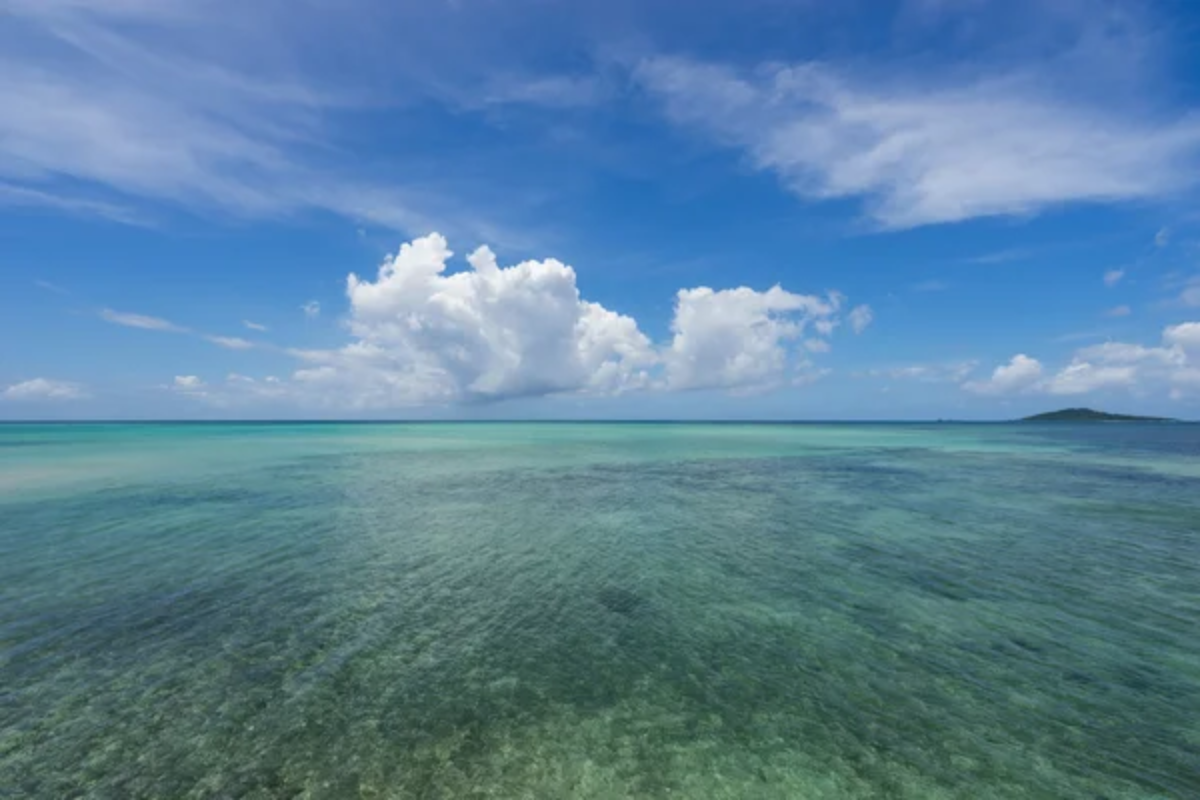
The Yabiji coral reef surrounding this Okinawan island contains over 100 coral species creating massive formations rarely found elsewhere in such shallow, accessible waters. Snorkelers immediately notice the exceptional water clarity, with visibility often exceeding 120 feet, thanks to minimal rainfall and runoff from the small limestone island.
Giant table corals stretch 20 feet across, providing habitat for colorful anthias fish that dart back into coral branches when the shadow of a snorkeler passes overhead. The warm Kuroshio Current brings tropical marine species normally found much further south, creating unexpected encounters with unique creatures like the ornate leaf scorpionfish—a master of camouflage that appears indistinguishable from the coral until it moves.
Like Travel Pug’s content? Follow us on MSN.
Stingray City, Grand Cayman
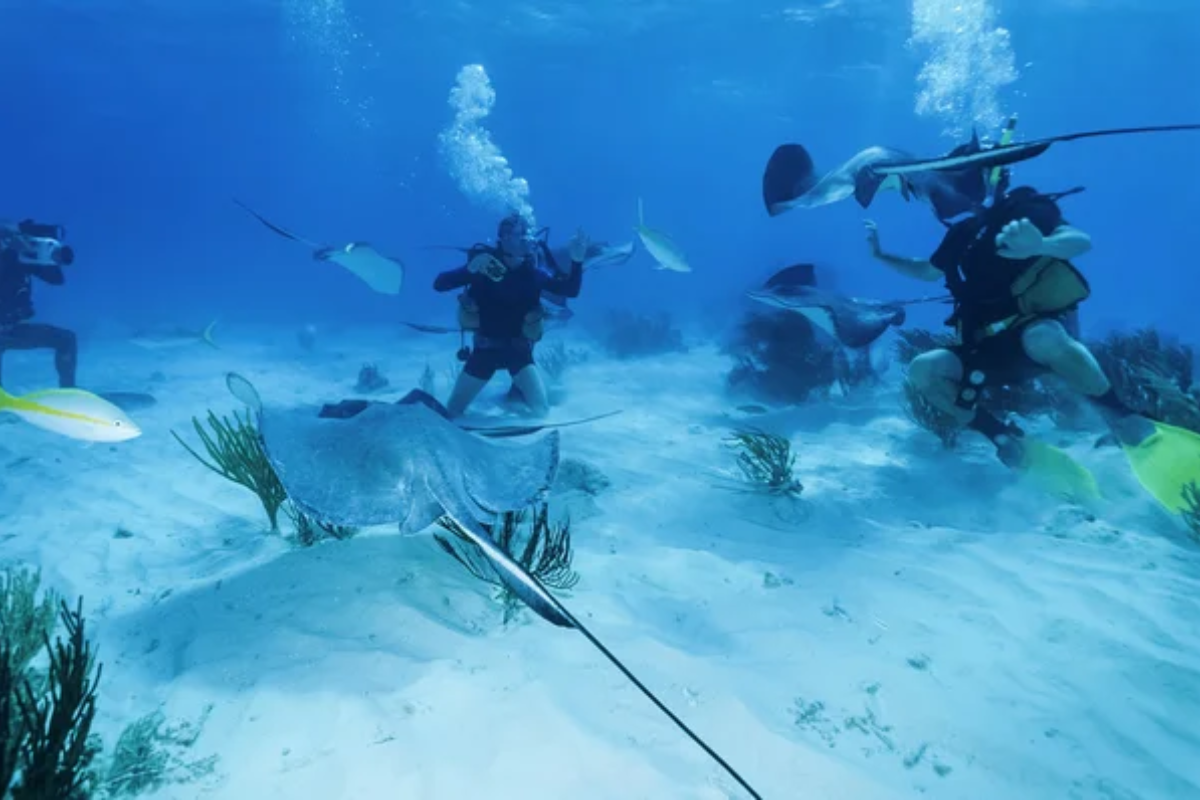
This natural sandbar in the Caribbean creates a shallow 3-foot deep platform where wild southern stingrays have gathered for decades, initially attracted by fishermen cleaning their catch and now accustomed to interacting with snorkelers. The friendly rays, some with wingspans exceeding five feet, glide between visitors looking for food and gentle petting, creating an unusually interactive wildlife experience.
Their velvety undersides brush against snorkelers’ legs while their expressive eyes and seemingly smiling faces create memorable encounters, even for those initially nervous about swimming with these misunderstood creatures. The clear, calm waters provide perfect conditions for underwater photography, allowing even novice snorkelers to capture frame-worthy images of these graceful animals.
Coral Bay, Western Australia
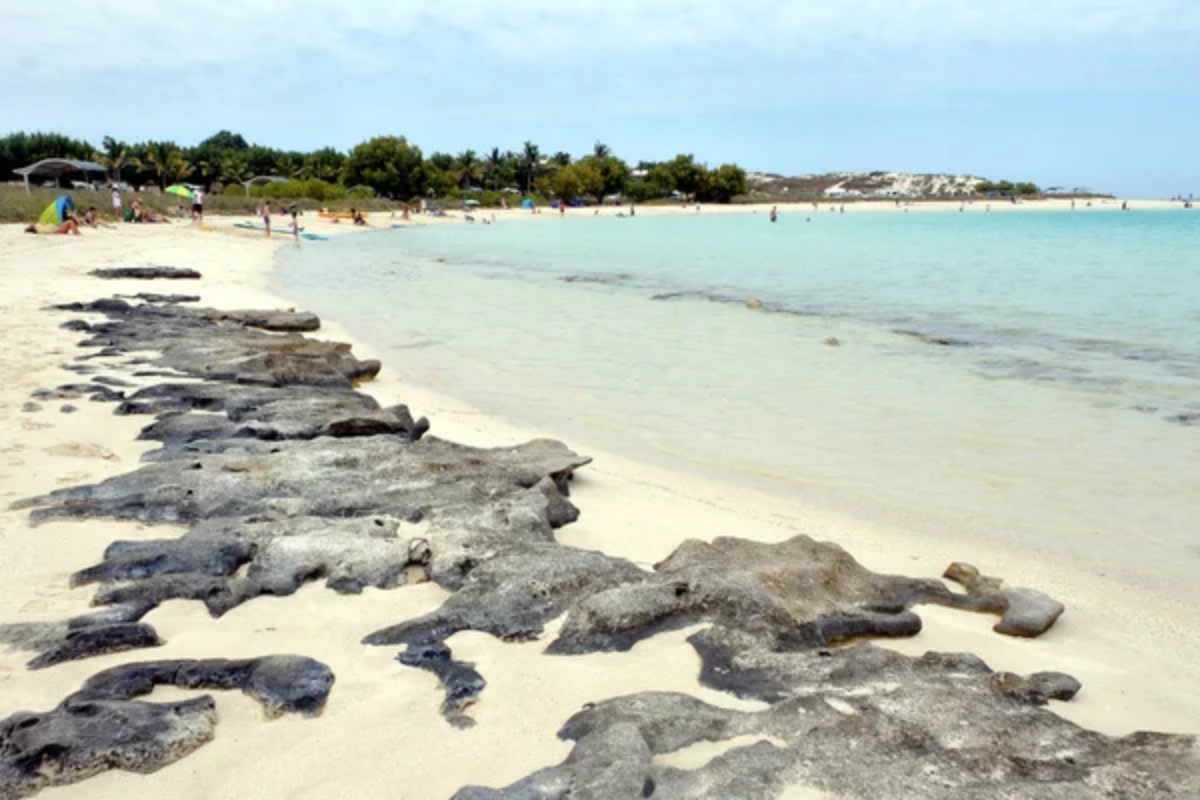
This tiny settlement on Australia’s western coast provides access to Ningaloo Reef—one of the world’s longest fringing reefs, located just yards from shore rather than miles offshore. Between March and July, enormous whale sharks—the largest fish in the ocean—cruise the nutrient-rich waters, allowing snorkelers rare face-to-face encounters with these gentle plankton feeders that can reach lengths of 40 feet.
During other months, manta rays with 15-foot wingspans perform underwater ballets as they filter feed in the shallow bays, often accompanied by schools of colorful damselfish seeking protection among their massive wings. The remarkable accessibility of world-class marine life attracts visitors from across the globe who can simply wade into the water from shore and immediately find themselves above pristine coral gardens.
Trunk Bay, U.S. Virgin Islands
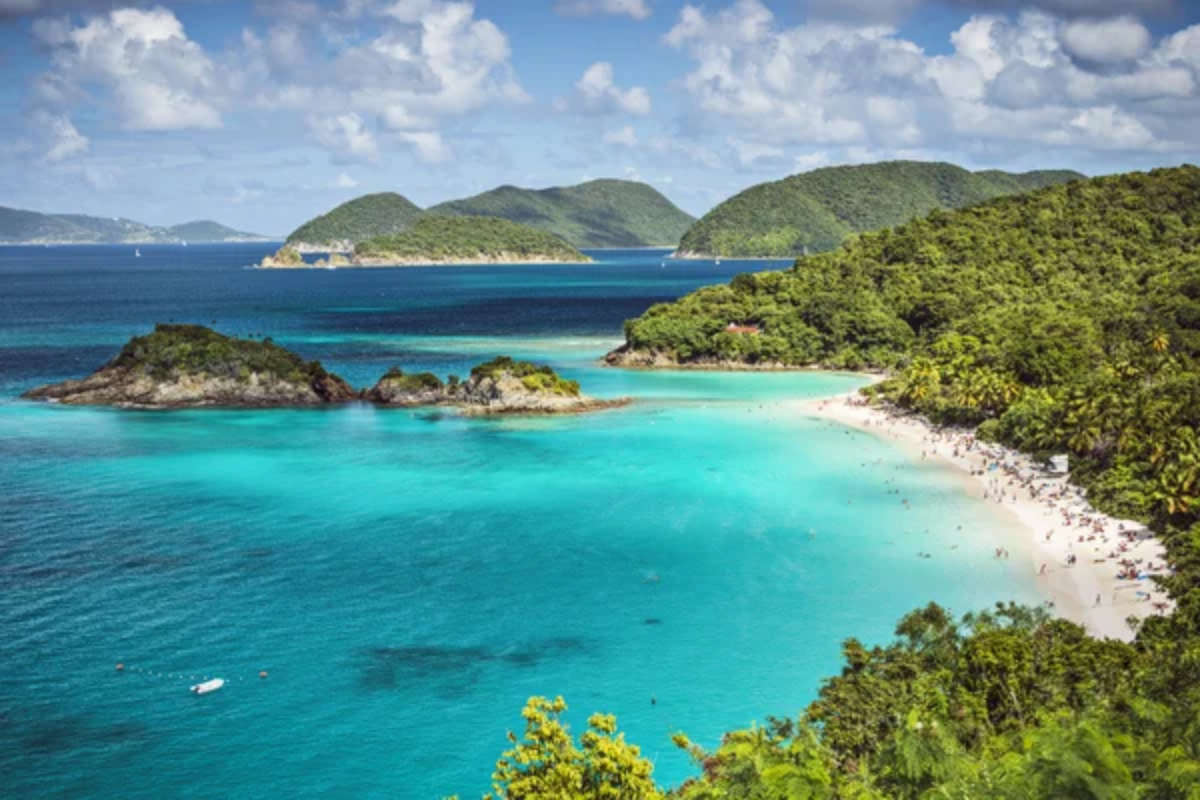
This picture-perfect Caribbean beach within Virgin Islands National Park features a 225-yard underwater snorkeling trail with informational plaques identifying corals and fish species along the route. The clear waters reveal extensive elkhorn coral formations—their distinctive antler-like branches creating natural architecture that provides habitat for royal grammas, blue tangs, and queen angelfish.
Hawksbill and green turtles frequently feed in the turtle grass beds adjacent to the reef, lifting their ancient reptilian faces to the surface for breaths between browsing sessions. The carefully protected marine reserve has allowed fish populations to flourish, creating scenes reminiscent of the Caribbean reefs of decades past before overfishing impacted many similar areas.
Like Travel Pug’s content? Follow us on MSN.
Kealakekua Bay, Hawaii
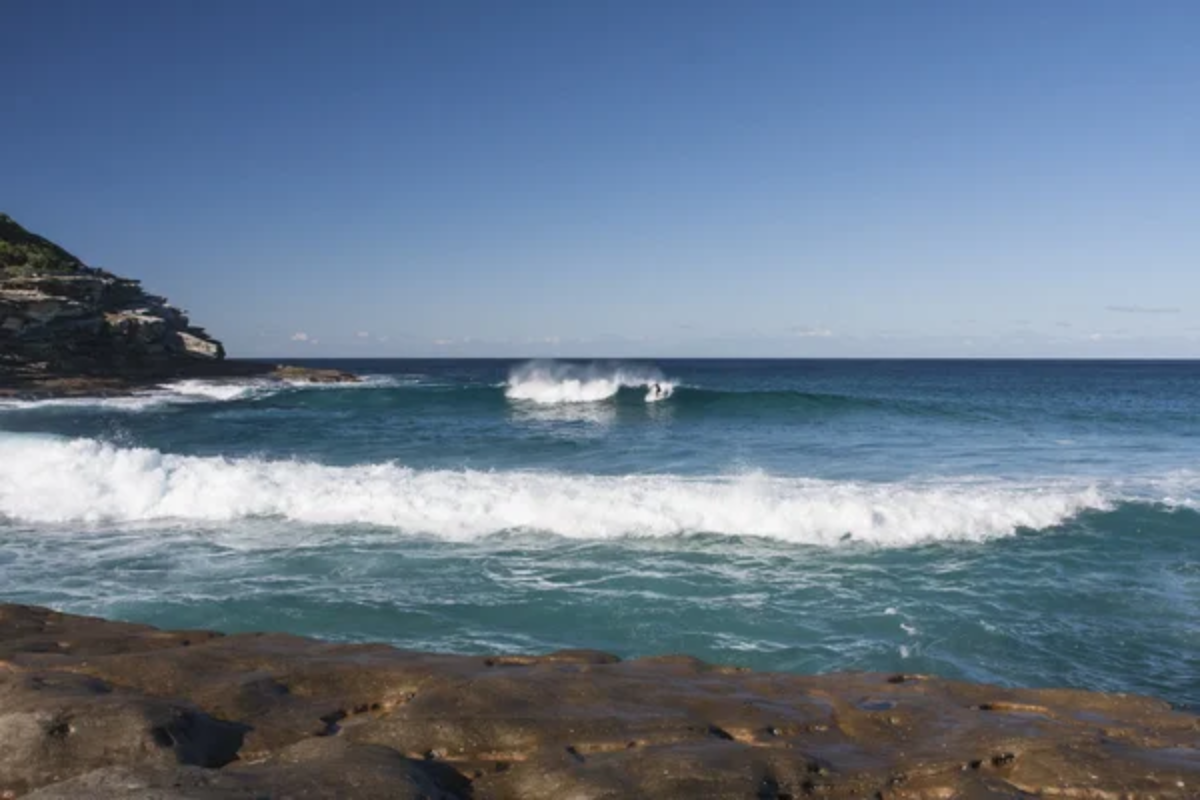
The site where Captain Cook first landed in Hawaii now serves as a marine life conservation district with some of the healthiest coral in the Hawaiian Islands. The sheltered bay features a dramatic underwater drop-off where colorful reef fish swarm in schools so dense they temporarily block the sunlight filtering through the clear blue water.
Spinner dolphins frequently visit the bay for daytime resting, allowing respectful snorkelers occasional glimpses of their graceful underwater movements and complex social behaviors. The contrast between the barren lava fields surrounding the bay and the explosion of life beneath the surface creates a powerful reminder of how ocean environments often flourish where land appears least hospitable.
Menjangan Island, Bali

This uninhabited island within West Bali National Park offers snorkelers rare access to a pristine reef system protected from development and excessive tourism. Coral gardens begin in just a few feet of water, with gently sloping walls eventually dropping into the deep blue depths of the Bali Sea.
Massive Gorgonian sea fans stretch perpendicular to the current, their purple and orange hues creating a striking contrast against the blue background where chevron barracuda and trevally hunt in the deeper water. Tiny pygmy seahorses cling to specific sea fan species, their perfectly matched colors and textured bodies making them nearly invisible until pointed out by experienced local guides familiar with their preferred hiding spots.
Anse Source d’Argent, Seychelles
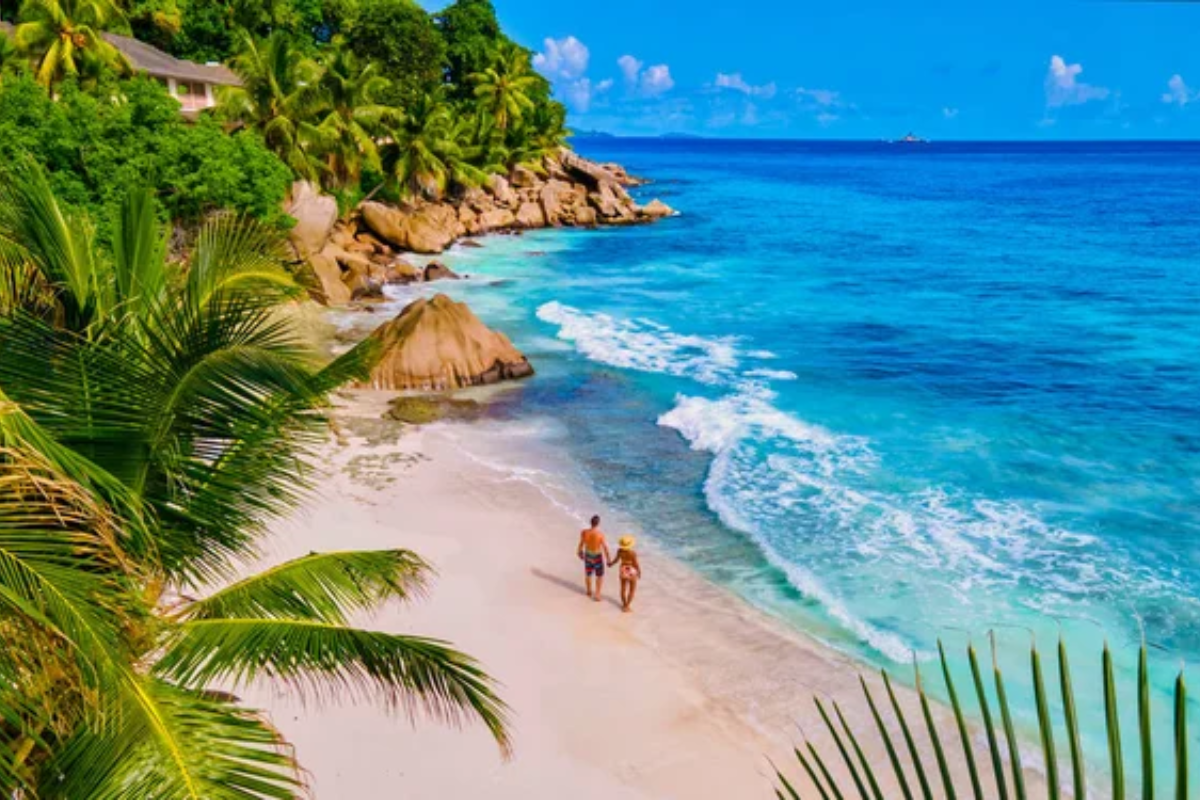
Often cited as the world’s most photographed beach, this stunning shore on La Digue Island backs immense granite boulders against turquoise waters and pure white sand. Snorkelers entering the protected lagoon immediately encounter juvenile blacktip reef sharks and eagle rays cruising the shallow sandy areas between coral outcroppings.
The massive rock formations continue underwater, creating swim-throughs and caverns where soldierfish with their large eyes hide from the tropical sun. The landscape above water proves just as captivating as what lies beneath, allowing snorkelers to alternate between exploring the vibrant reef and admiring the distinctive Seychellois scenery that has graced countless travel magazine covers.
Like Travel Pug’s content? Follow us on MSN.
Beyond the Surface
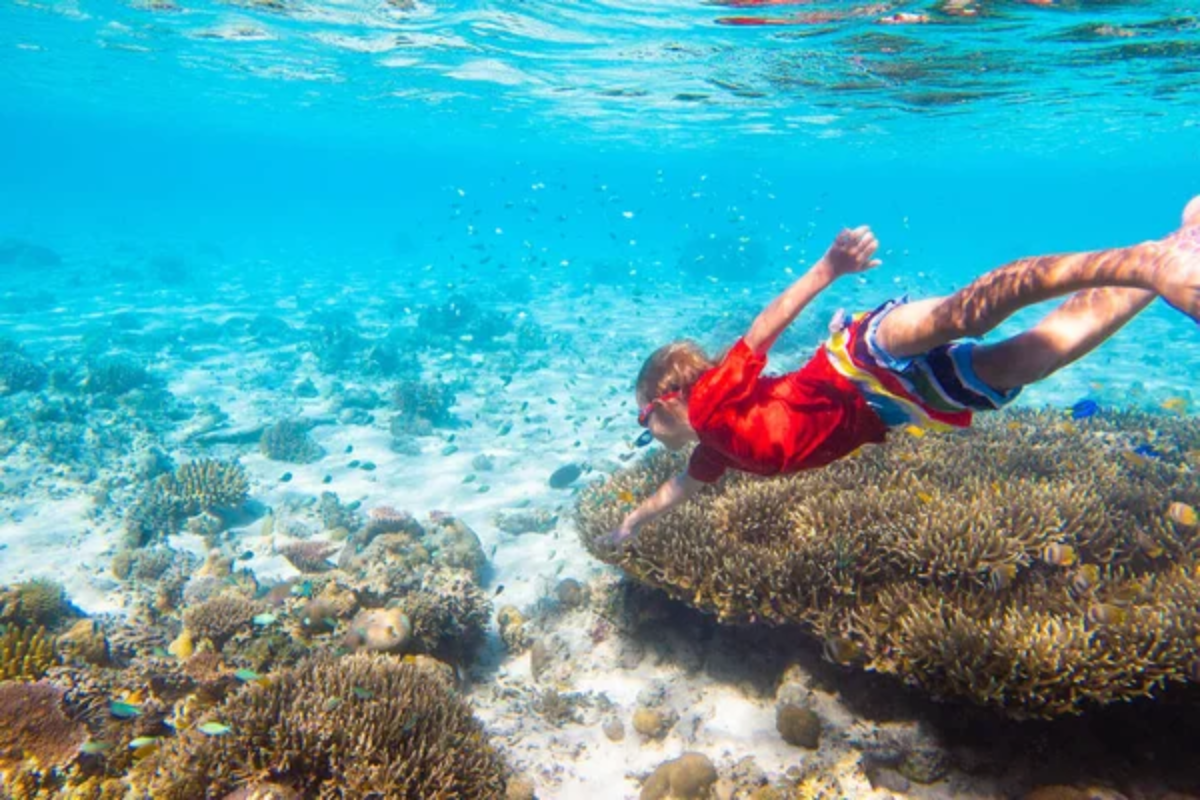
These extraordinary snorkeling destinations reveal that, sometimes, our planet’s most accessible natural wonders lie just beneath the water’s surface. The simple act of donning a mask and snorkel transforms visitors into explorers of underwater worlds—where coral architecture rivals our grandest cathedrals and fish display colors no human artist could imagine.
As marine conservation awareness grows, these protected snorkeling havens serve as living examples of what healthy ocean ecosystems can offer when given proper protection. Whether floating above a Hawaiian reef or drifting between tectonic plates in Iceland, these snorkeling beaches connect us with the water planet we call home in ways both profound and unforgettable.
More from Travel Pug

- Cities Growing so Fast You Won’t Recognize Them in 10 Years
- 13 Destinations Where Tourists Regularly Regret Their Trip
- 16 U.S. Cities That Are Quietly Becoming Travel Hotspots
- Where to Travel If You Love Long Bus Rides and Daydreams
- 20 Cities Perfect for Solo Travelers Who Crave Adventure & Culture
Like Travel Pug’s content? Follow us on MSN.
